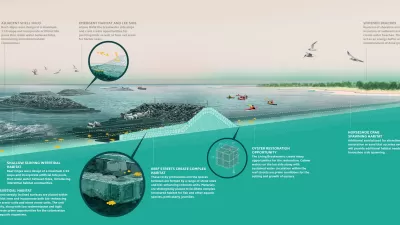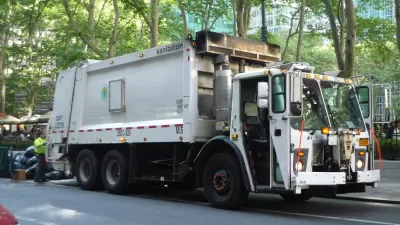Michael Kimmelman tours Fresh Kills landfill, once the world's largest garbage dump, and now a model for landfill reclamation and, unexpectedly, climate change mitigation.

For decades, Fresh Kills was a dirty word in New York's borough of Staten Island, and to many, what was once a notorious garbage dump, still is. But since its closing in 2001, the 2,200 acre site has become a model for ecological restoration - boasting the largest expanse of meadow in the region - and is, hopefully, on its way to becoming a public park. After protecting nearby neighborhoods like Travis, Bulls Head, New Springville and Arden Heights from more severe flooding during Superstorm Sandy, "it is also demonstrating the role of wetland buffers in battling rising waters," says Kimmelman.
The landfill's transformation into a public park, following the competition winning design of James Corner (designer of the High Line), has been stalled by regulatory and financial hurdles. But Kimmelman is hopeful that the area's transforming image "will help push officials to ready what is known as Freshkills Park for visitors," and repeat the success of the High Line in transforming a former industrial site into an unexpected amenity.
"Once it is opened to the public," he argues, "the park also promises to repay long-suffering Staten Island residents who endured generations of stench and anger, and more than that, to give the entire city an immense, bucolic urban playland — a 21st-century postindustrial landmark rising from mounds of 20th-century waste."
FULL STORY: Staten Island Landfill Park Proves Savior in Hurricane

Study: Maui’s Plan to Convert Vacation Rentals to Long-Term Housing Could Cause Nearly $1 Billion Economic Loss
The plan would reduce visitor accommodation by 25% resulting in 1,900 jobs lost.

Alabama: Trump Terminates Settlements for Black Communities Harmed By Raw Sewage
Trump deemed the landmark civil rights agreement “illegal DEI and environmental justice policy.”

Why Should We Subsidize Public Transportation?
Many public transit agencies face financial stress due to rising costs, declining fare revenue, and declining subsidies. Transit advocates must provide a strong business case for increasing public transit funding.

Paris Bike Boom Leads to Steep Drop in Air Pollution
The French city’s air quality has improved dramatically in the past 20 years, coinciding with a growth in cycling.

Why Housing Costs More to Build in California Than in Texas
Hard costs like labor and materials combined with ‘soft’ costs such as permitting make building in the San Francisco Bay Area almost three times as costly as in Texas cities.

San Diego County Sees a Rise in Urban Coyotes
San Diego County experiences a rise in urban coyotes, as sightings become prevalent throughout its urban neighbourhoods and surrounding areas.
Urban Design for Planners 1: Software Tools
This six-course series explores essential urban design concepts using open source software and equips planners with the tools they need to participate fully in the urban design process.
Planning for Universal Design
Learn the tools for implementing Universal Design in planning regulations.
Smith Gee Studio
Alamo Area Metropolitan Planning Organization
City of Santa Clarita
Institute for Housing and Urban Development Studies (IHS)
City of Grandview
Harvard GSD Executive Education
Toledo-Lucas County Plan Commissions
Salt Lake City
NYU Wagner Graduate School of Public Service




























